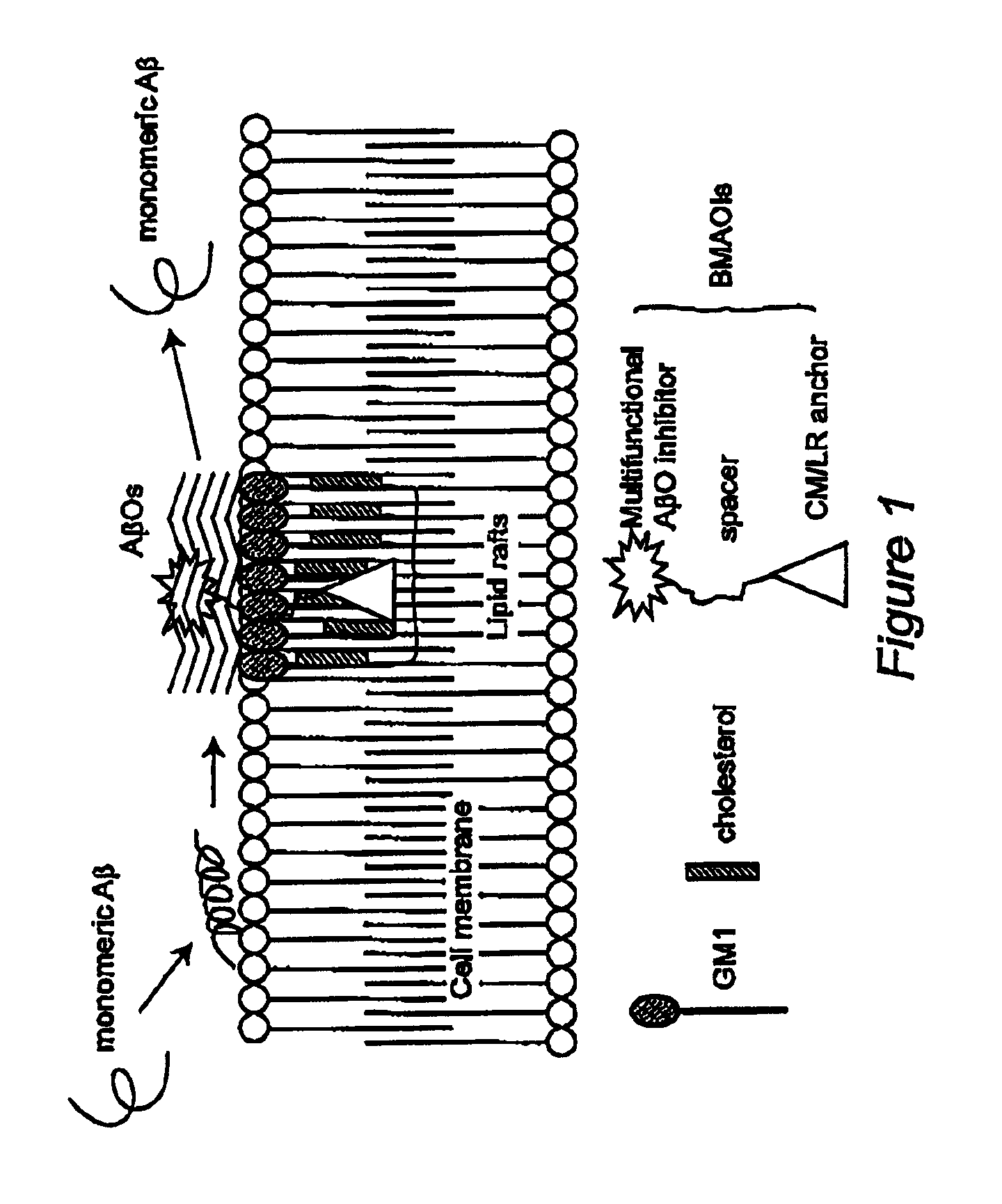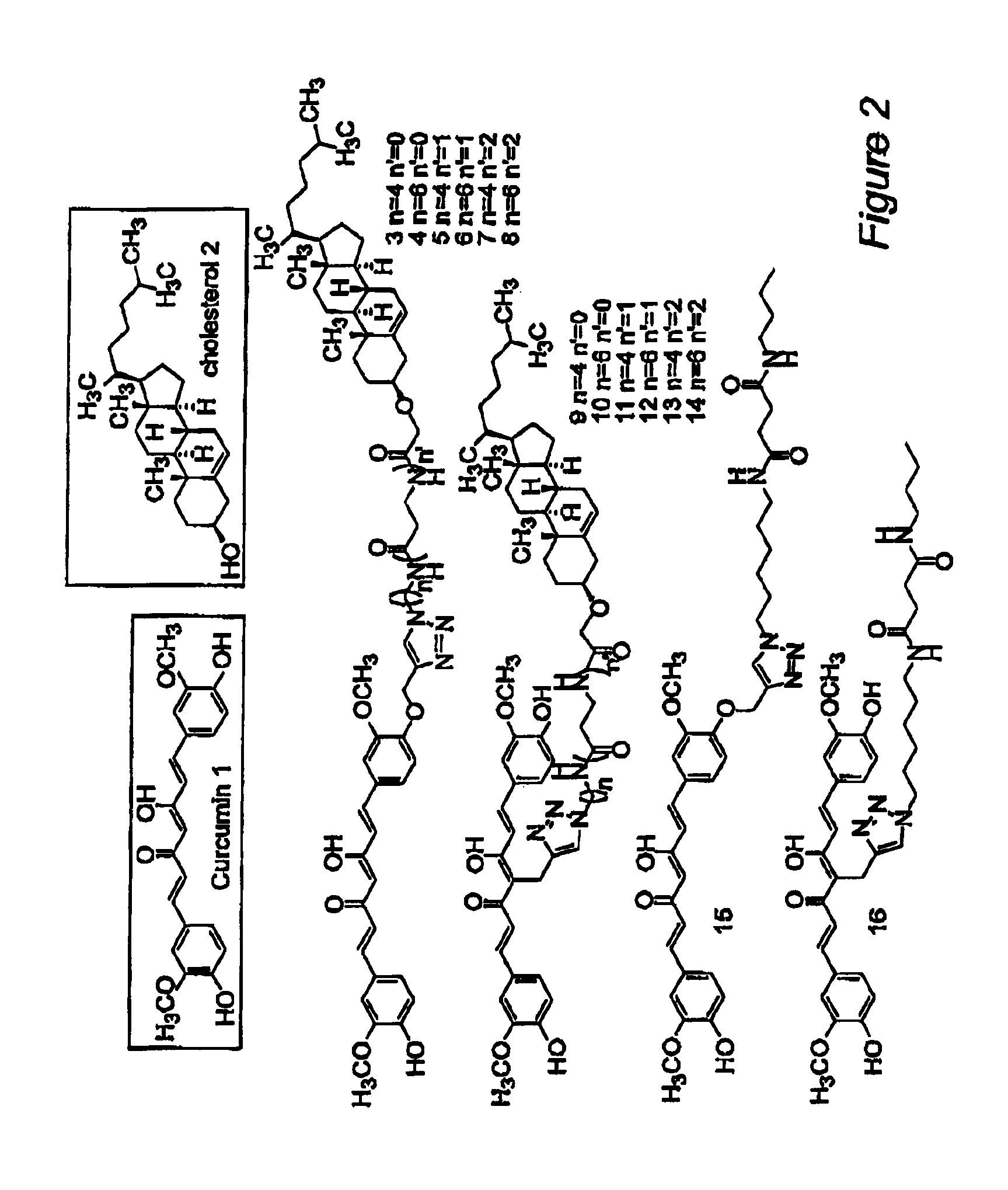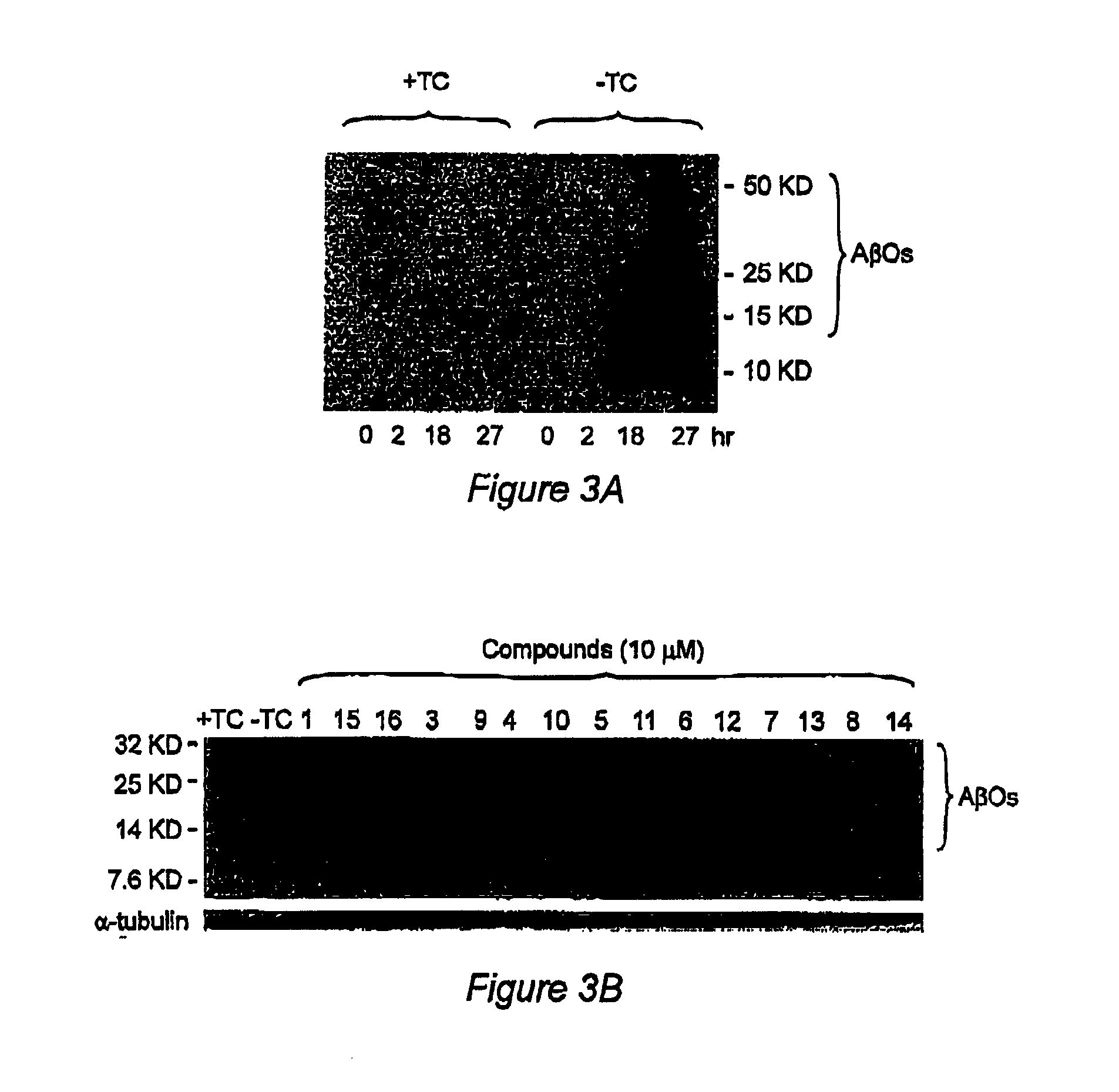Bivalent multifunctional ligands targeting Aβ oligomers as treatment for Alzheimer's disease
a multifunctional, bivalent technology, applied in the direction of instruments, diagnostic recording/measuring, ultrasonic/sonic/infrasonic diagnostics, etc., can solve the problem that targeting a single risk factor is not an ideal strategy for developing treatments for this multifaceted diseas
- Summary
- Abstract
- Description
- Claims
- Application Information
AI Technical Summary
Benefits of technology
Problems solved by technology
Method used
Image
Examples
example 1
“Clicked” Bivalent Ligands Containing Curcumin and Cholesterol as Multifunctional Aβ Oligomerization Inhibitors: Design, Synthesis, and Biological Characterization
[0054]Abstract In our effort to develop multifunctional compounds that co-target beta-amyloid oligomers (AβOs), cell membrane / lipid rafts (CM / LR), and oxidative stress, a series of bivalent multifunctional Aβ oligomerization inhibitors (BMAOIs) containing cholesterol and curcumin were designed, synthesized, and biologically characterized as potential treatments for Alzheimer's disease (AD). The in vitro assay results established that the length of spacer that links cholesterol and curcumin and attaching position of spacer on curcumin are important structural determinants for their biological activities. Among the BMAOIs tested, 14 with a 21-atom-spacer was identified to localize to the CM / LR of human neuroblastoma MC65 cells, to inhibit the formation of AβOs in MC65 cells, to protect cells from AβOs-induced cytotoxicity, a...
example 2
Bivalent Ligands Containing Curcumin and Cholesterol as Fluorescence Probe for Aβ Plaques in Alzheimer's Disease
[0115]ABSTRACT: A recently developed bivalent ligand 14 has been evaluated for its capability to label and detect aggregated β-amyloid (Aβ) peptide as a fluorescent probe. This probe contains curcumin as the Aβ recognition moiety and cholesterol as an anchorage to the neuronal cell membrane / lipid rafts. The results demonstrate that 14 binds to the monomers, oligomers as well as fibril of Aβ42 with low micomolar to submicromolar binding affinities. This chemical probe has also required optical properties and can rapidly cross the blood-brain barrier (BBB). Furthermore, 14 fluorescently stain Aβ plaques in transgenic mouse brain tissue. Collectively, these results suggest that 14 may be developed as an Aβ-imaging agent and encourage further optimization of 14 as a new hit to develop better fluorescent probes.
[0116]Alzheimer's disease (ADa) is a devastating neurodegenerative ...
example 3
Second Generation BMAOIs
[0124]In the studies described in Example 1, a series of BMAOIs containing curcumin and cholesterol were designed, chemically synthesized and biologically assayed to reach the proof-of-concept of our BMAOI strategy. The results demonstrated that BMAOIs with optimal spacer length and connectivity localize to the CM / LR, efficiently suppress the production of intracellular Aβs, protect MC65 cells as well as retain the antioxidant and metal complexation activities. Furthermore, the lead BMAOI can cross the BBB and bind to the Aβ plaques. In order to further validate the BMAOI strategy and develop additional BMAOIs, a new series of BMAOIs containing cholesterylamine as the CM / LR anchorage moiety and curcumin as the multifunctional moiety were designed, synthesized and characterized. Cholesterylamine was chosen to replace cholesterol due to the following: 1) It has been reported that N-alkyl derivatives of cholesterylamine can also effectively anchor CM / LR in mamma...
PUM
| Property | Measurement | Unit |
|---|---|---|
| thickness | aaaaa | aaaaa |
| thickness | aaaaa | aaaaa |
| pH | aaaaa | aaaaa |
Abstract
Description
Claims
Application Information
 Login to View More
Login to View More - R&D
- Intellectual Property
- Life Sciences
- Materials
- Tech Scout
- Unparalleled Data Quality
- Higher Quality Content
- 60% Fewer Hallucinations
Browse by: Latest US Patents, China's latest patents, Technical Efficacy Thesaurus, Application Domain, Technology Topic, Popular Technical Reports.
© 2025 PatSnap. All rights reserved.Legal|Privacy policy|Modern Slavery Act Transparency Statement|Sitemap|About US| Contact US: help@patsnap.com



